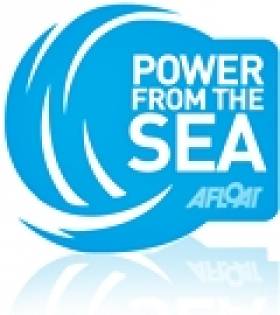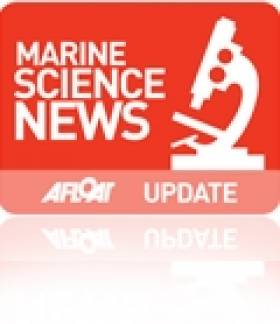Displaying items by tag: Beaufort
What Would Admiral Beaufort Make Of The Current COVID-19 Situation?
The Navan-born Admiral Sir Francis Beaufort KCB FRS FRGS FRAS MRIA (1774-1857) was a man of very many interests, some of them a little startling. His work as the Hydrographer of the Navy is remembered in the name of the extra-deep Beaufort Dyke in the North Channel, which was used after the end of the Hitler Unpleasantness as a dump for unused explosives, thereby making the prospect of any Ireland-Scotland bridge or tunnel an even more exciting challenge.
Be that as it may, Beaufort is now best remembered for his wind strength scale. These days, we may be bewildered by having to gauge wind power in terms of measured metres per second or miles per hour or knots or whatever. But Beaufort cut through all this by realising that it was the pressure exerted by the wind, rather than its absolute speed, which was the key to it all. He illustrated this by showing the effect his different scales would have on factors such as the sea state, the amount of sail a first class wind-driven warship could carry, and whether or not fishing boats had scurried for the nearest port, or else had resigned themselves to riding it out, lying a-hull.
As we’ve mentioned here in Afloat.ie ad nauseam, Beaufort’s Force 6 (now understood as winds of 22-27 knots) is actually exerting 200 times the pressure of his Force 2 (4-5 knots), so it’s far indeed from being no more than five times the strength of a Force 2. And the more you sail, the more you realise how well Beaufort reflected the reality rather then some laboratory re-construction.
So how do you suppose he might assess the current COVID-19 situation and the arrival of the Omicron version with its 36 variants? These days, we’re all world-standard epidemiologists. But Beaufort’s originality and success in his own fields of study suggests that his approach might produce interesting and possibly even optimistic results. Omicron may indeed be even more easily transmitted than previous mutations. But reports suggest that its adverse effect on patients is less intense. We reckon that Admiral Beaufort might suggest that in terms of effect - his key metric - the virus and its pandemic are now in decline.
Marine Renewable Energy Sector Worth €9 Billion by 2030
#powerfromthesea – Ireland's marine renewable energy sector could ultimately be worth as much as €9 billion by 2030, and be supporting thousands of jobs on the island, according to Energy Minister Alex White. Speaking at the Marine Renewable Energy Ireland (MaREI) Industry Day, in Ringaskiddy, Co. Cork, Minister White also said his department's support for research and development in ocean renewables would increase by almost €17 million between 2013 and 2016, bringing it to over €26 million.
Minister White said Ireland had the potential to become the international focal point of the international marine renewable industry. He was in Ringaskiddy to perform the 'topping out' ceremony at the UCC Beaufort Building, which will be the hub of the Marine Renewable Energy Ireland (MaREI)from summer 2015. With up to 135 researchers, the Beaufort laboratory will house the world's largest group of marine renewable energy researchers.
Minister White said: "Ireland has a landmass of around 90,000 square kilometres. Our sea area is ten times that size, and it represents one of the best offshore renewable energy resources in the world. The development of Ireland's marine renewable energy sector will contribute to the generation of carbon-free renewable electricity. In the process, it will enhance the security of Ireland's energy supply, deliver green growth, and add to the 47,000 jobs already supported by Ireland's energy sector.
"Over time, the introduction of ocean energy into Ireland's renewables portfolio will result in an indigenous ocean sector with significant economic and employment benefits. You and your industry will be central to making these potential benefits a reality. Exchequer support for ocean research, development and demonstration has been increased. Between 2013 and 2016, €16.8 million was added to my Department's multi-annual ocean energy development budget, bringing the total cumulative funding to €26.3 million."
Minister White quoted the Sustainable Energy Authority of Ireland and Invest Northern Ireland, whose recently-published Economic Study for Ocean Energy Development in Ireland found that a fully-developed ocean energy sector could be worth as much as €9 billion, and be sustaining many thousands of jobs on this island, by 2030.
Minister Sean Sherlock in 2013, announced €19 million in SFI funding for MaREI, when he was Minister for Research and Innovation. This was matched by €10.5 million in industry funding.
#marinescience – Ireland's access to two of the most powerful natural resources in the world – wave and wind – has lead Government to give the green light to a new €200 million maritime research Centre that aims to propel Ireland to the forefront of global maritime and energy markets.
An Taoiseach Enda Kenny will to turn the sod on the Beaufort Research Centre next Thursday, 11 July in Cork Harbour.
In February, Minister for Jobs, Enterprise and Innovation, Mr Richard Bruton, and the Minister for Research and Innovation, Mr. Seán Sherlock, announced details of Science Foundation Ireland's (SFI) largest state/industry research investment in Irish history. State investment of €200m will be matched by a contribution of some €100m by the business sector over the next six years.
The hugely ambitious plans are drawn from research at the maritime cluster in the Ringaskiddy area, bringing together SERG (Sustainable Energy Research Group) and the HMRC (Hydraulics & Maritime Research Centre) and the CMRC (Coastal and Marine Research Centre).
Th Beaufort centre will provide an accessible entry point for international and national industry and research groups focused on sustainable resource development as well as a Centre of academic excellence for education on maritime and energy fields, and ensure that Ireland is a global leader in research in the maritime & sustainable energy field.
The investment in the Beaufort Research Centre is a combined €200 million project, and will allow for the creation of 200 jobs during construction, as well as permanent staff thereafter in the area of 150.
Ocean energy advocate Dr. Tony Lewis (UCC) who heads up the new centre has been working to harness wave power when few could see the potential. Georgina Foley who is Business Development and Access Manager for the Beaufort Research Centre is also driving this project.
The architects on the centre are McCullough Mulvin from Dublin.
Ireland is in one of the best locations in terms of marine renewable energy resources. This centre will develop the science and technology required by industry to generate wave, tidal and floating wind energy devices. MaREI will carry out world leading research on all aspects required for the success of the marine renewable energy sector while also educating and training the next generation of engineers and scientists for the marine renewable energy industry.
Liverpool’s Last Chance to See Shackleton
Visitors to the Merseyside Maritime Museum have just over a fortnight to view Endurance: Shackleton's Antarctic Adventure! writes Jehan Ashmore.
The exhibition which has been running since last July, tells the epic story of Sir Ernest Shackleton's 1914 expedition and the incredible real life tale of survival. For over two years, Shackleton and his men became castaways during their Antarctic ordeal.
Also featuring in the exhibition are 150 compelling images taken by the ships photograph, Frank Hurley who saved the negatives from perishing in the icy waters.
The Endurance exhibition ends on Sunday 27 February and admission is free. For further details logon to the National Liverpool Museums website here
Last year the Dublin Port Company named a new tug, Shackleton in honour of the Athy-born, polar explorer and a sister tug was named Beaufort after the Navan-born innovator, Sir Francis Beaufort.
To read about the tugs in their starring role in an advertisement made for the National Lottery last year click this link and to see the tugs in Making Magic mode click video
Dublin Port Tugs Making Magic 'Rainbow' Happen
The spectacular effect of the life-size rainbow had never been achieved before in Ireland. Steve Green, the director of the advertisement used a 35mm film, with footage from HD cameras, including one mounted on the helicopter which hovered over the 'new' landmarks of the 'Docklands'.
The imaginative advertisement was created by Sweet Media, the production company chosen to produce the campaign, under the direction of the National Lottery's advertising agency, DDFH&B. The soundtrack for 'Making Magic Happen' is the appropriately titled 'Pocketful of Rainbows', sung by Elvis Presley. The version used is Take 16 from the 1960 recording sessions for the 'G.I. Blues' soundtrack.
As for the stars of the advert, the tugs are named after Irish figures, Shackleton, named in honour of Antartic explorer Sir Ernest Henry Shackleton and Beaufort, named after Navan-born, Sir Francis Beaufort, who created the world-renowned wind-scale measurement.
The 50-bollard ton tugs cost €6m each and were built at the Astilleros Zamakona Shipyard, Bilbao. In March the tugs officially entered service after a joint naming ceremony was held in Dublin Port.
To view the tugs in water-firing, making magic mode!... click the link here

































































